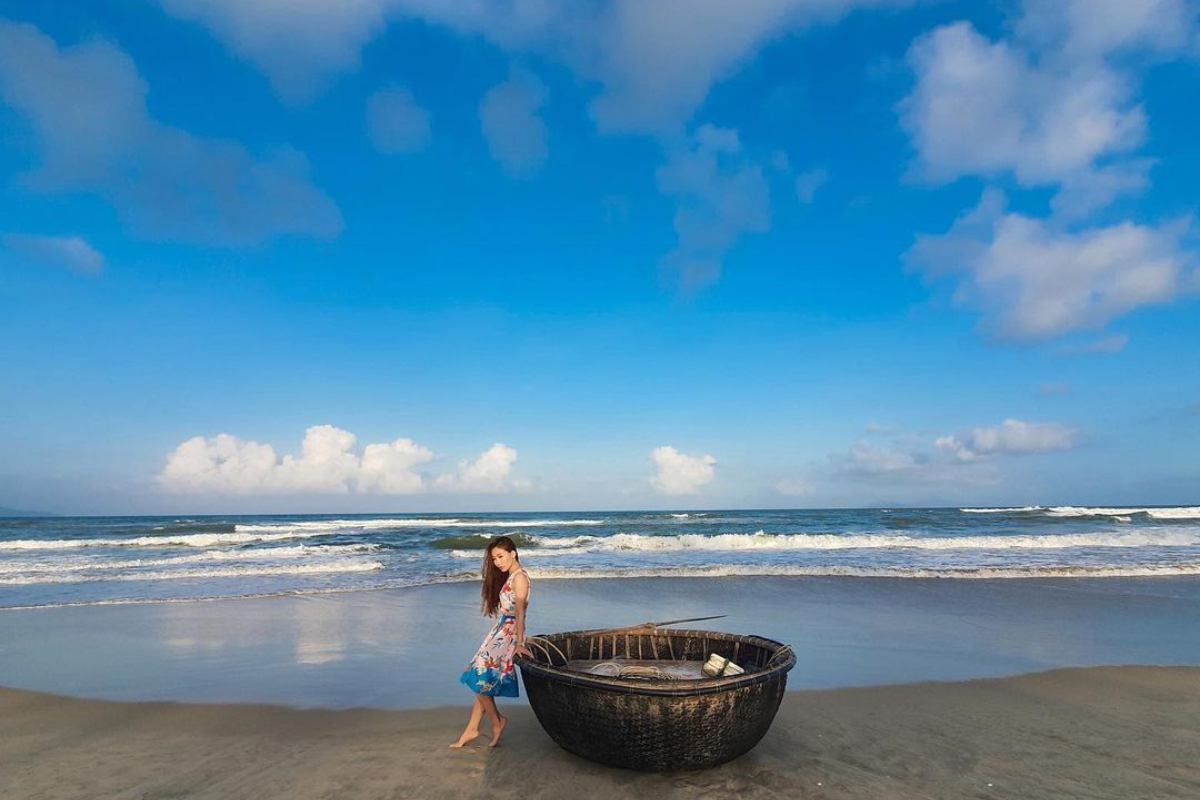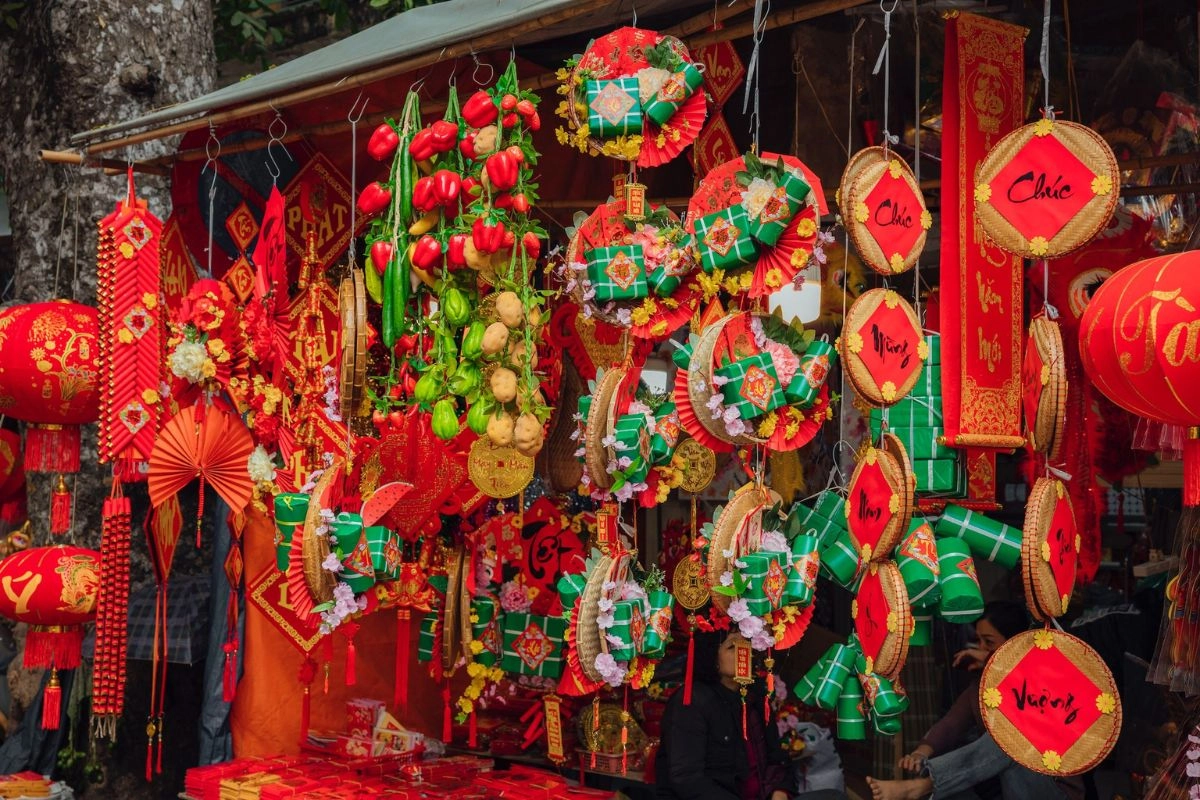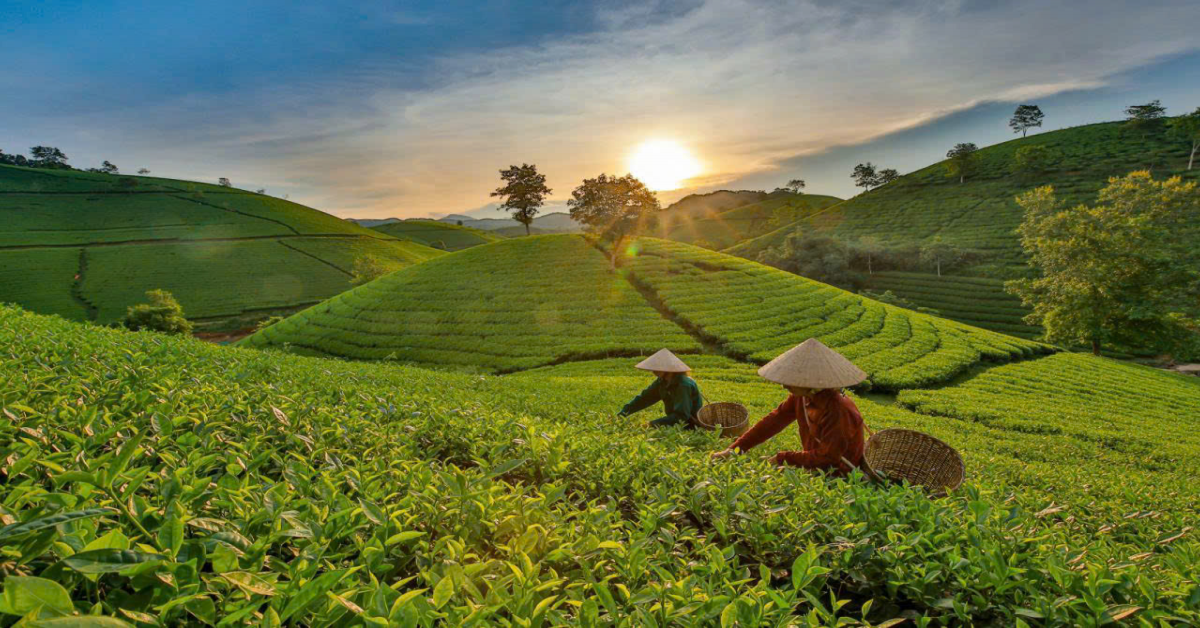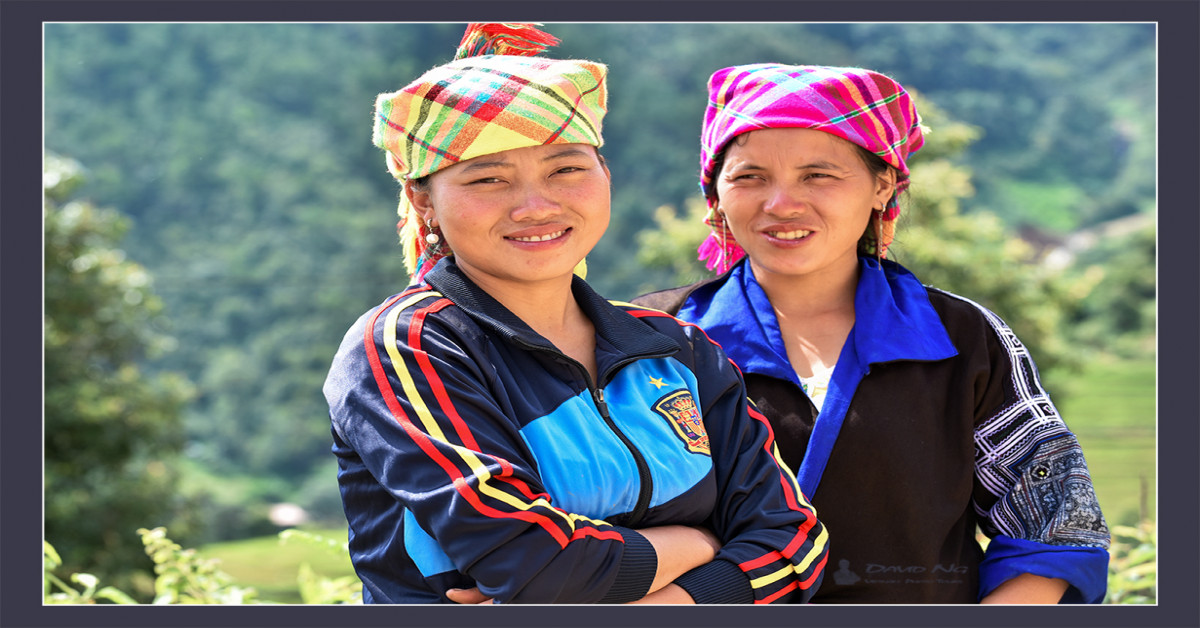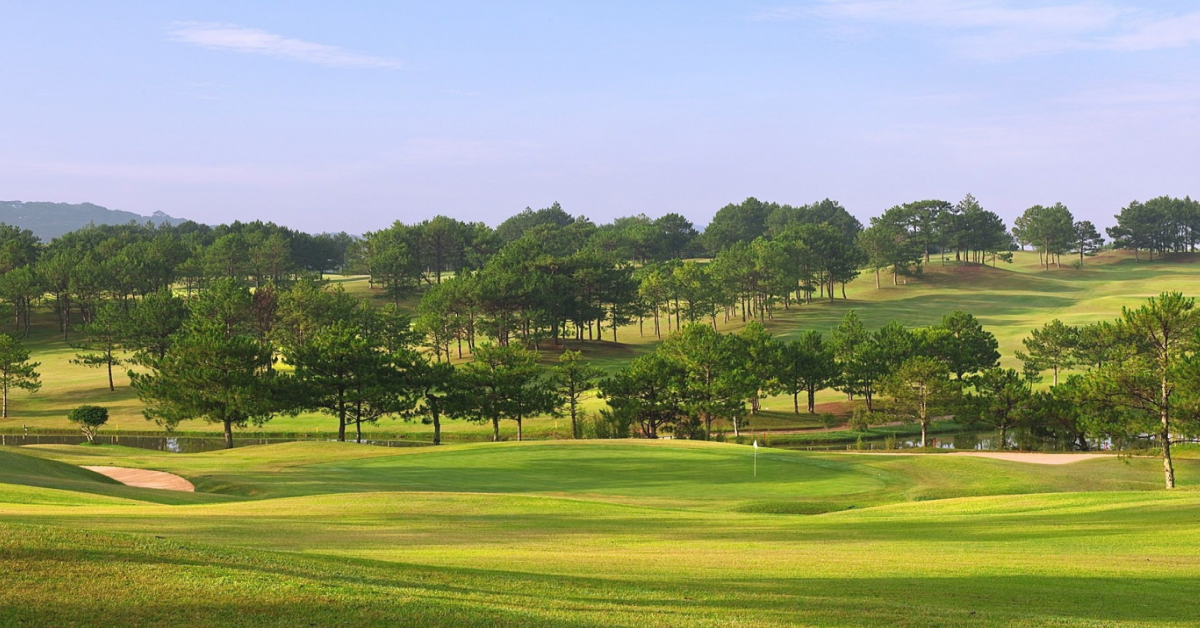The Tet Holiday’s Foods
Tet Holiday or Lunar New year from a Vietnamese point of view means the occasion that people spend time having food parties with their parents and relatives. That’s why Vietnamese new year food refers to one of the most significant customs, which is still preserved to this day
Top 5 Vietnamese lunar new year food
Tet foods in Vietnam traditional cuisine consists of several unique and special dishes, presenting the spiritual life of Vietnamese. Throughout Vietnamese new year food, we tell stories of how people work and live from time to time, illustrating the agricultural products we produce.
Banh Chung and Banh Tet
In the past, Vietnam suffered starvation, which took the lives of countless people. Accordingly, rice in Vietnamese people’s civilization plays a crucial role, being used as the main ingredient in many Vietnamese dishes. Banh Chung and Banh Tet are also representative food.
Last centuries, growing rice was hard work due to outdated technologies and war impacts. At that time, Banh Chung and Banh Tet were only made in Tet since those cakes required sticky rice and pork, which were rarely available in that period.
So, why do we have two Tet cakes, Banh Chung and Banh Tet? Technically, those cakes are made with the same ingredients and similar cooking methods. However, Banh Chung and Banh Tet are different shapes. The shape of Banh Trung is kind of square, and Banh Tet presents like a tube. In the North of Vietnam, people usually make and use Banh Chung, while Banh Tet is preferred in the South.
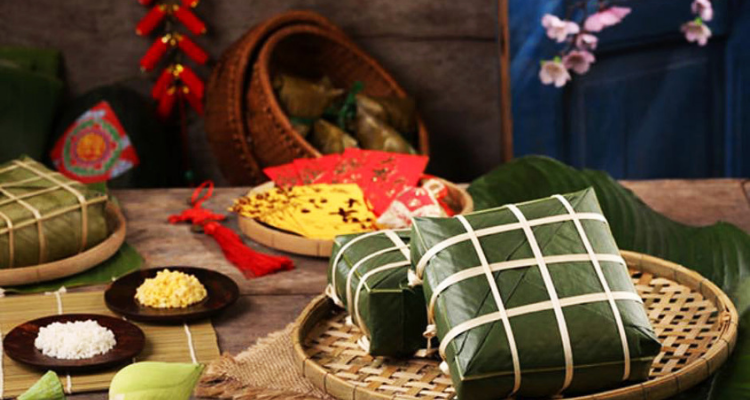
Some regional Tet Cake
Within the three regions of Vietnam, we have several different and special Tet foods or tet cakes, representing distinct customs and lifestyles. Here is some regional Tet Cake you might love:
- Banh To: commonly made by people in the Central region of Vietnam. Banh To is made from thoroughly kneaded Glutinous flour and sugar. Recently, Banh To has been only available on Tet occasions. On regular days, it is hard to purchase Banh To in any part of Vietnam.
- Green bean cake: is a specialty of Hai Duong, a province located in the North of Vietnam. It makes from green beans powered with sugar. We commonly serve Green bean cake with condensed tea.
- Hemp leaves little cakes from the Central part are usually served during three Tet days. A popular legend in Vietnam told that the cake came from a princess of the 18th Hung King, inspired by Banh Chung and Banh Day.
Tet deserts: Candied Fruits (Mut) and Melon seeds
Candied fruits and melon seeds (also known as Jam) are popular snacks among Vietnamese Tet foods. Candied Fruits are normally produced from Carrots, Coconuts, squash, and Gingers, which are dried with sugar to preserve longer. We usually eat Jam and seeds with condensed tea during Tet days. In Vietnam tradition, we believe that having Jam in Tet Foods would bring fortune for the Lunar New Year.
Vietnamese traditional Jam is commonly stored inside a colorful box called “Trap Mut Tet”. We invite guests to eat Jam when they visit our house. Sometimes, Jam can be used as a gift for children to bring to their homes.
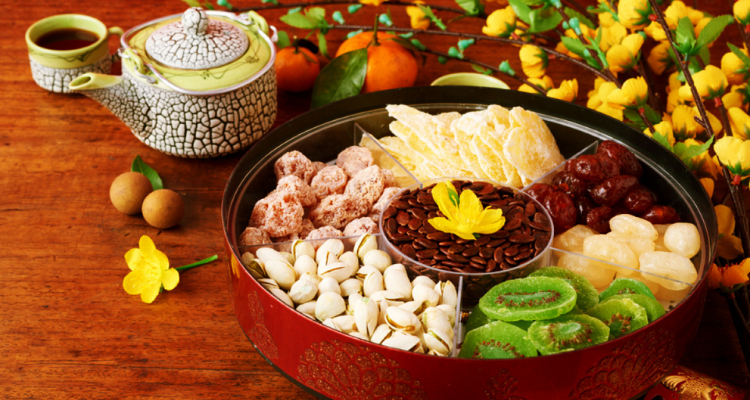
Spring rolls (Nem/Cha Gio)
Spring rolls refer to one of the most indispensable Vietnamese lunar new year foods as main dishes. Spring rolls are made from a mixture of minced pork, some diced vegetables (carrots, kohlrabi, bean sprouts, green onion), vermicelli, and mushrooms rolled up inside rice paper. Then, the roll would be deep-fried to be crispy. We commonly serve spring rolls with a special dipping sauce made from fish sauce.
The name of spring rolls comes from the custom Vietnamese. They usually prepare the food in the spring, typically during Lunar New Year. It is known as the balanced dish, which contains both vegetables and meat, deterring the overwhelming of protein within Tet meals.
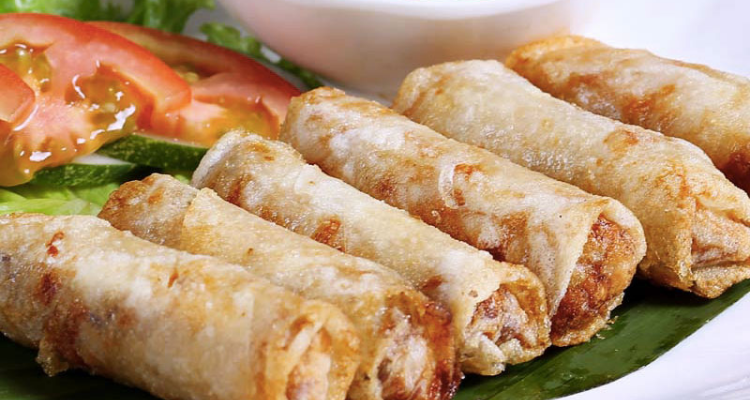
Pickled Onions or pickled cabbage
While Korea has Kim Chi as a nationally picked food, Vietnamese new year food commonly has picked onions in every Tet meal. In Vietnamese tet foods, the main dishes would mainly Oiled or fried food. We need something fresh to balance the taste like sour Onions. Pickled food helps our digestive system defending to high-protein nourishment. A completed meal would contain meat, Pickled Onions, and spring rolls in most Vietnamese parts,
Besides, the traditional Pickled Onions in Tet meals also came from a famous couplet:
“Thịt mỡ, dưa hành, câu đối đỏ Cây nêu, tràng pháo, bánh chưng xanh”.
This couplet presents the signature items in the Vietnam Tet tradition, which are: Fatty meat, pickled onions, cabbage, red couplets, Neu tree, firecracker, and Banh Chung. It means that a Tet full of the above items tends to be a prosperous New year in Vietnam's ancient belief.
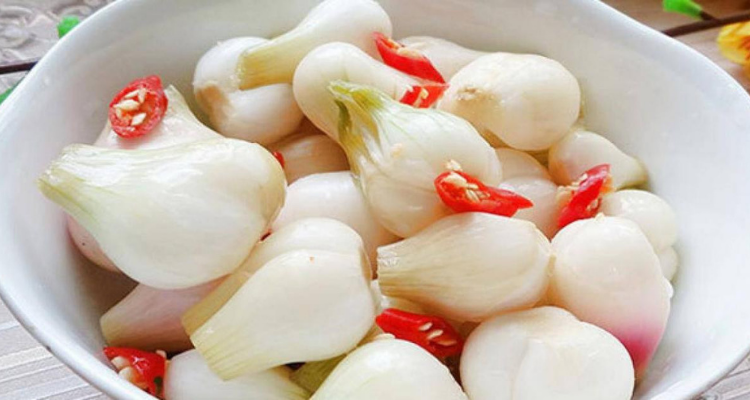
The Meaningful value of Vietnamese new year food
Vietnam Lunar New Year refers to the biggest holiday in our country. On this occasion, people from all parts of Vietnam would try to come back to their hometowns for a reunion purpose. In other words, Lunar new years mean staying together.
In this case, Vietnamese new year foods, which are not limited to the above mentionings, represent the special corners of each region. They are not solely Tet foods, but also Vietnamese cultures.
History of Vietnamese lunar new year food
The term “Tet” has several meanings since the Vietnamese celebrate many Tet occasions annually. However, when talking about Tet, we mean the Lunar New Year in common sense.
In the past, the ancient Vietnamese believed in Lunar Calendar for agricultural activities. It is somehow in delay 1 month compared to Western Calendar today. As a result, the lunar New year times are commonly celebrated between late January and the middle of February.
As the influence of Chinese culture, the Vietnamese Lunar New year celebration is held for one to two weeks. As mentioned below, it is time for a family reunion and guest welcome. In the ancestors’ life, Tet foods were prepared for a month before Tet. The more diversity of Tet Food, the more prospective the family is.
How Vietnamese do with Tet traditional food
We care a lot about the full and complete Tet meals. In the North, Hanoi refers to the city retaining the highest numbers of traditional Tet holiday food. The thriving of Tet meals would be presented by the sophistication of Lunar New year dishes. Technically, standard Tet meals in Hanoi would have at least eight dishes. They are:
- Four bowl dishes
- Four plate dises
The Lunar New year foods are prepared carefully with extraordinary taste and decoration. Before every Tet meal, we usually offer it to ancestral grandparents at the altar. At this time, we pray for luck, happiness, and prosperity in the next year coming to all family members.
Apart from that, many Vietnamese families also prepare tet foods as the possesty, offering them to local pagodas or temples.

